As global pharmaceutical firms continue to see healthcare demand, price control policies and drug development costs rise (around $1.5 billion from idea to commercialization, says Deloitte), they need the right locations and the most effective networks more than ever before.
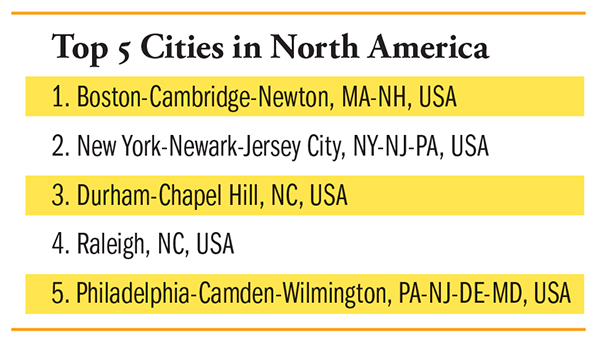
The 2017 edition of The World’s Most Competitive Cities — just published by Site Selection publisher Conway, Inc. — finds that the world’s leading life sciences cities tend to be home to clusters of superior universities graduating clusters of superior talent, and also fostering collaborative partnerships with companies. The top five cities in each of six world regions appear on these pages, determined first by corporate facility project tallies over the past several years drawn from the Conway Projects Database, then the limning of those results by data and analysis contributors EY and Oxford Economics.
Concurrent with the release of the World’s Most Competitive Cities report came the debut of Deloitte’s 2017 Life Sciences Outlook, which also took note of companies using collaborative product development to simultaneously fill innovation and talent pipelines while also keeping costs in line. See charts.
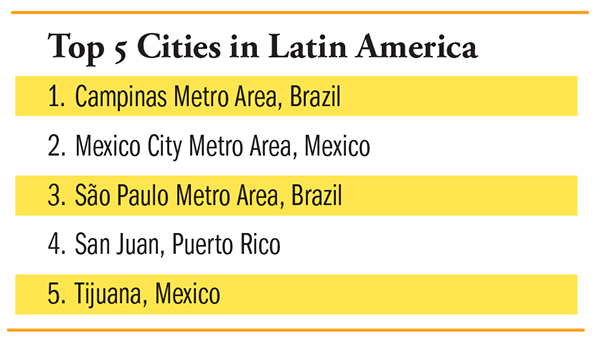
“Life sciences is joining other industries in which companies have turned to open innovation (OI) and other collaborative models as a way to fill in-house capability gaps and overcome R&D and marketplace challenges by externally sourcing innovative ideas, knowledge, skills, and technologies,” said the Deloitte report. And whether the partners come from government, academia, biopharma or the startup crowd, “according to a Deloitte analysis, there is a three-fold probability of success when drugs are sourced via OI.”
As EY’s 2016 Beyond Borders report found, either Cambridge (in the UK or in Greater Boston) is a solid bet for biotech investment. The same can be said of life sciences investment in general, as both Greater Boston (No. 1) and Cambridge, UK (No. 4), find themselves among the leaders in their respective world regions. New York and traditional Research Triangle powers Raleigh and Durham-Chapel Hill follow Boston in North America, with Greater Philadelphia also in the mix.
From Emerging to Fully Hatched
The World’s Most Competitive Cities results for Western Europe were led by Berlin, Dublin and Barcelona, with Cork, Ireland, finding fifth position. The Irish cities have seen recent investments from Grifols, Mallinckrodt and Takeda in Dublin, and by BioMarin in Cork. In Eastern Europe, Warsaw, Budapest and Skopje, Macedonia, top the rankings. Warsaw’s recent roster of expansions has included investments from AstraZeneca, Banner Service Corp. and Symmetry Medical.
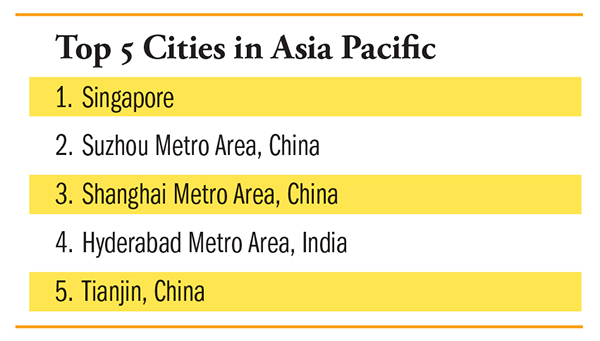
Cairo and Nairobi top our charts in Africa and the Middle East, while Campinas and São Paulo are No. 1 and No. 3, respectively, in Latin America, sandwiched around No. 2 Mexico City. However, notes Dan Levine of Oxford Economics, getting life sciences firms to invest in emerging markets is a tall order. “In many emerging markets, poor patent regulation and intellectual property protection discourage investment that might otherwise migrate from developed economies,” he writes. “This is particularly true in research and development functions where a combination of rising costs and drugs targeting smaller markets is discouraging investment.”
That conclusion finds corroboration in Pwc’s 20th survey of global life sciences CEOs, released in March. The markets showing the most growth potential, say the CEOs, are the US, China, Germany, Brazil and the UK, in that order, followed by Japan and Russia.
As for M&A by multinationals (MNCs), “life sciences companies should still look for openings in markets with significant access constraints and unmet needs — within Latin America, Southeast Asia and Africa, for example,” says Deloitte. At the same time, however, “governments in emerging markets such as China, Russia, and Southeast Asia also can make it difficult for MNCs to increase their global footprint by instituting policies that promote locally produced drugs and encourage domestic companies to invest in pharmaceutical manufacturing.”
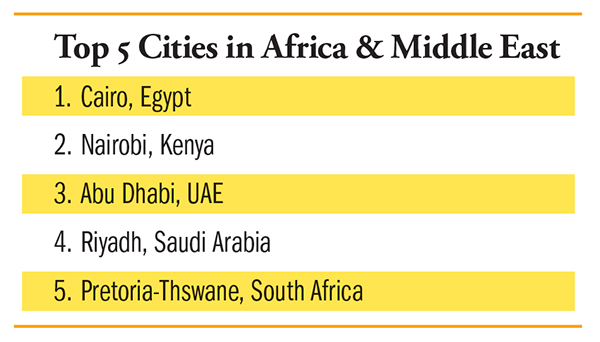
Looking for the opposite dynamic? Then look to global life sciences beacon Singapore, which frankly tops most lists when it comes to prime life sciences locations. That’s why Abbott Labs, DSM and GSK, among others, continue to invest and grow in the ultimate city-state, where pharma and biotech have grown by more than 30 percent since 2011.
The government’s EDB Singapore explains why: “Singapore’s integrated research ecosystem enables companies to access multidisciplinary capabilities in a single location, which improves R&D decision-making and accelerates drug discovery and development.”
Shifting Sands
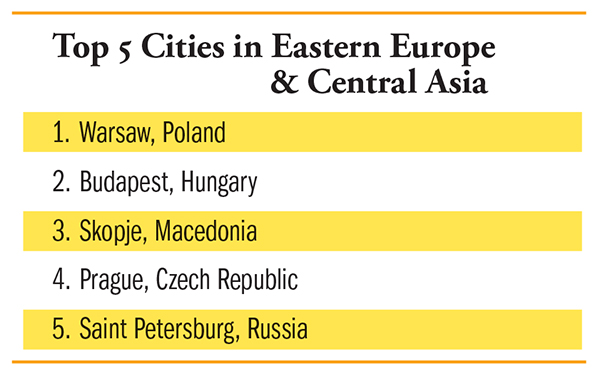
Worldwide pharmaceutical R&D spending totaled $149.8 billion in 2015, reported Deloitte, and is expected to grow by 2.8 percent annually to $182 billion in 2022. And corporate project rosters in top-ranking Asian cities other than Singapore — Suzhou, Shanghai and Tianjin in China, and Hyderabad in India — show how emerging markets are increasingly about research as much as manufacturing. Companies currently leaning more on developed markets are wise to take note.
As Deloitte’s report puts it, “For the past two decades, the United States was considered the world’s leading funder and innovator — providing up to 70 to 80 percent of global life sciences R&D funding. Yet in recent years, the country has had a major decline in its R&D competitiveness, with other nations (especially those in Asia) more actively competing and investing in various elements of the value chain.”
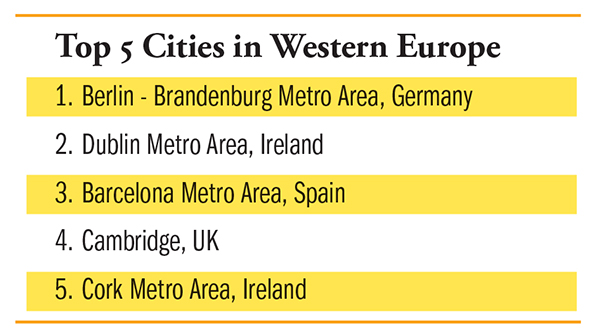
Yet even that surge comes with a universal caveat: access to the right talent. Pwc’s survey shows availability of skills among CEOs’ top concerns, alongside over-regulation, speed of technological change and cyber threats.
“Government efforts to boost domestic innovation and localized manufacturing in nations like Singapore and Russia are frequently stymied by a lack of qualified in-country talent,” Deloitte reports. “Singapore, for example, is tightening the approval process for work visas, and companies may need to revisit their operations in Singapore if appropriate staff cannot be employed. Other Southeast Asian governments are working to ease restrictions on the movement of labor, but it remains to be seen if and how quickly those efforts will meet the region’s talent needs.”
If indeed the top cities start to falter, competing clusters and institutions from every world region — from areas such as Chongqing, Saitama, Melbourne and Ho Chi Minh City in Asia; Lyon, Munich and Liverpool in Europe; San Diego, Chicago and Montréal in North America — are ready to pounce.

